- Bruce Smith
- Bucky Hanks
- Ricky Haynie
- Jeff Phillips
- The band, from left to right: Jeff Phillips (face obscured by guitar neck), Rick Haynie, random guy with arms crossed, Bucky Hanks.
- Modern times: Hanks and Phillips at Voltage Records. “When we finished playing, there was so much screaming and people going crazy, that, really and truly, I thought I was one of The Beatles.”
It all started with a mysterious, old 45.
Local DJ and record collector Whitney Shroyer stumbled across it four years ago in a Hendersonville junk shop. The label read simply: “Don’t Be Surprised” / The Satyrs / Produced by High Fidelity Sales / Asheville, N.C. When he plunked the needle down on the turntable, he knew he’d found something special.
“It just gave off this energy,” says Shroyer. “It's an amazing song, and an amazing performance. Especially during the breakdown, when the band is screaming and the drummer is whomping the living hell out of everything in sight.”
Crudely recorded, with plaintive vocals and a wild, teenage abandon, it’s the epitome of ‘60s garage rock. But what’s most amazing about The Satyrs record isn’t the sound. It’s where it’s from.
Listen to “Don’t Be Surprised” by The Satyrs:
“It’s extremely unique,” says Greg Cartwright, local garage-rock connoisseur and frontman for Reigning Sound. “In the mid-’60s, Asheville was not some big booming town with a large middle class and lots of suburbs, which is generally where the teenage bands from that time came out of. I was convinced when I first moved to Asheville that [a garage scene] never happened here.”
Barely a handful of people across the U.S. own a copy of the 45. There’s a record collector in Philadelphia, and another in Connecticut. It’s easily one of the most rare and cherished 45s of their collection, they say. And like Shroyer and Cartwright, ever since they came across it, they’ve had the same question.
Just who were the Satyrs?
So Xpress went to go find out. Armed with nothing more than the band name and a scanned image of the record, we figured it would be a daunting, damn-near impossible, task. But thanks to Facebook and the librarians at the North Carolina Room of Pack Memorial Library, in just a couple of days we managed to track down one Bucky Hanks, Lee H. Edwards High School class of ‘65, former singer/bassist for the Satyrs. (Not to be confused with a different garage band with the same name that formed a few years later in New Jersey.)
Hanks still lives right here in Asheville. He’s a bluegrass musician and an Episcopalian priest at a church on Riverside Drive. Sixty-five years old, with a salt-and-pepper beard and a recurrent chuckle, he was thrilled to sit down and reminisce about Asheville’s (surprisingly) vibrant garage scene of the ‘60s.
Though he admits that he’s a bit baffled to be talking about a recording, not to mention a band, that he hasn’t thought about in more than 40 years.
“To be quite frank, I wasn’t aware that anyone was still playing it,” Hanks says with a laugh. “We were 16-17-year-old kids. It never would have even crossed my mind that any of those records were out there floating around. Or that people even knew about it.”
For Hanks and his bandmates, those rock ‘n’ roll days lasted just a few short years, from about 1964 to 1966. A brief window, yes.
But, fortunately, not forgotten.
Meet the Satyrs
It was the beginning of 1964. Recently appointed President Lyndon B. Johnson had just begun covert military operations against North Vietnam. The Beatles, still relatively unknown in the U.S., were watching their single “I Want to Hold Your Hand” climb toward No. 1 on the American charts, just a few weeks shy of their first trip stateside for the Ed Sullivan Show.
And in the little mountain town of Asheville, N.C., four high-school musicians — Jeff Phillips (guitar/vocals, 18), Bucky Hanks (bass/vocals, 17), Bruce Smith (drums, 17), and Rick Haynie (lead guitar, 16) — were forming their latest project, the Satyrs.
Most of the members had known each other for years. Hanks, Phillips and Haynie grew up together in West Asheville, back when it was a small, blue-collar neighborhood with a few restaurants and a couple of soda shops. They met Smith when they started attending Lee Edwards (now Asheville) High School.
Like most teenage bands in the early ‘60s, the Satyrs started off playing covers. Chuck Berry, Little Richard, Fats Domino, Ray Charles — all those great artists who played their rock ‘n’ roll primal, passionate and raw.
Listen to “Blue Blue World” by The Satyrs:
Click here to listen
“We were drawn more to the black rock ‘n’ roll, the ‘soul music’ of the time, than Elvis and that sort of stuff,” says Hanks. “But as the Beatles became more and more prominent, we began to incorporate a lot more of their tunes in there.”
Of course, the Satyrs quickly encountered one major obstacle: finding a place to practice.
“We were loud,” Hanks says, laughing. “Needless to say, we were not welcome at a lot of the homes. I remember one place that was the basement of a friend of ours, and it had a dirt floor. When it was damp, I don’t know how we kept from being electrocuted.”
But practice they did. And over the next two years, the Satyrs averaged a show a week, playing anywhere that would pay them. Dressed up in Beatle’s boots, stovepipe pants, collar-less coats, with their “long” hair combed forward past their eyebrows, they often shared the stage with other popular rock ‘n’ roll bands from around town, acts like Bee Bumble and the Stingers, the Royal Spades and the Fabulous Wunz.
The best gigs were when they got hired to play for kids their own age: high school dances, private parties, sock hops, country clubs, “teen-night spots” (aka dry, chaperoned rooms where kids would come to dance). On a good night they could rake in $20 apiece.
Rick Haynie, the former Satyrs guitarist who now lives in Alabama, remembers a particularly raucous show they played at Lee Edwards.
“The auditorium was absolutely jammed,” says Haynie. “I don’t know how many people that auditorium holds, but it was standing-room only. They called us out for an encore, and we did Ray Charles’ ‘What’d I Say,’ and Jeff rips open his shirt and falls on his knees, singing. The place just went berserk. It was the first time my mother had ever seen me perform in a band, and she couldn’t believe it. She said they were carrying girls out who were fainting. When we finished playing, there was so much screaming and people going crazy, that, really and truly, I thought I was one of the Beatles.”
The Satyrs, as with other teenage garage bands in town, were no strangers to the bar and club scene. Even though they were a year or two shy of legal drinking age, they played then-well-known venues like The Pines, The Brown Derby, The Sky Club and The Ozark, not to mention rough-and-tumble spots like The Riverboat Lounge and The Amboy Lounge. Places that, if they existed nowadays, wouldn’t even let them past the door.
“I don’t know if we were ever asked how old we were,” Hanks says, laughing. “I don’t think the question ever came up. We just showed up, played our music, got the money and left. I’m sure our parents didn’t care for some of the places their kids were playing. But we were an adventuresome sort. We played some places where, looking back on it, I don’t even know that I would want to do that now. And I don’t know if I had better sense, if I would have done that then.”
“Well, Don’t Be Surprised, Girl”
Spurred on by Lennon/McCartney, who were just a few years older than the Satyrs, it wasn’t long before the Satyrs started trying their own hand at songwriting.
“I was bored, sitting at home one afternoon,” says Hanks, “noodling on my dad’s piano — I was not a pianist, but I was noodling around — and this little chord progression came together. I had listened to quite a bit of Lennon and McCartney by that time, so this little Beatles-y sounding thing of ‘Don’t Be Surprised’ came out in an afternoon.”
He closes his eyes and sings a bit of the refrain: Don’t be surprised, girl / When I say you’re my girl…
And the girl? Now that, Hanks can’t quite remember anymore.
“It was just one of those teenage charmer situations,” he says. “I would stay up late at night and journal. I would write poetry. I was captivated by people like Jack Kerouac, John Lennon, Bob Dylan.”
“Don’t Be Surprised” became an immediate hit with their fans when the band started including it in their set list. Pretty soon, other local bands were asking if they could cover it.
Hanks laughs. “We’d say, ‘Sure, have at it, who cares.’”
A 40-year-old fluke
The recording of “Don’t Be Surprised” happened almost by accident.
One of Hanks’ schoolmates had a relative who co-owned a stereo equipment store on Biltmore Avenue, near where the Orange Peel is now. High Fidelity Sales sold record players, needles, speakers, amplifiers, anything you needed for your home sound system. They also happened to be looking for local bands to record, using their equipment, at no cost to the band. “Being poor kids, we said sure, we’ll jump at that,” Hanks says. “It really was a total fluke.”
And so the bizarre story of that mysterious 45 begins.
“It was a very cold, winter night,” Hanks says. “We gathered all our stuff up and took it down there to Hi-Fi Sales one evening after hours. All they did was set up a little reel-to-reel recorder — it wasn’t even a multi-tracker — and a couple of mics. The fellow who did the recording, I don’t think he had ever recorded before, other than maybe just to tinker with it. He just said, ‘OK, you guys play.’ And so we did. We were there for probably three, three and a half hours.”
The band recorded two songs that night: “Blue Blue World,” a slow, spooky crooner, and the charmingly chaotic “Don’t Be Surprised.” Everything was done live, right there on the showroom floor. No overdubs. No producer. Just the band playing the songs over and over until they got it right. Or as close to right as possible.
“I don’t think we were satisfied with the cut of ‘Don’t Be Surprised,’” Hanks recalls. “At the very end of the thing, Jeff said, ‘Can we do it one more time?’ And the guy that was doing the recording said, ‘No. I’m tired. We’ve done it enough. If we don’t have it by now, we don’t have it.’”
So with their last take finished, the band packed up its gear and left.
And that was pretty much it.
A few weeks later, each band member received a complimentary copy of the 45, which High Fidelity Sales must have gotten pressed. But why, or how many, Hanks has no idea. In fact, the entire thing is still a bit of a mystery to him.
“I don’t know what [their] intentions or plans were,” he says. “I think they may have been very naive about the recording industry, and the business end of it. To think that you could press something like that and put it in a little retail store and sell a bunch of them, that’s a pipe dream for sure. Because it really was more of a demo, I would say, than anything.”
Not that the Satyrs much cared.
“To tell you the truth, we basically just dismissed it,” Hanks says. “Because we weren’t selling them, we weren’t trying to sell them. It never went anywhere. We never heard anything about it.”
About a year later, the Satyrs did get a chance to record again, this time at a real studio down in Greenville, S.C. But Hanks has no idea what happened to those tapes. Which, looking back, he’s fine with.
“That original recording had a certain chutzpah,” says Hanks. “The next year when we recorded ‘Don’t Be Surprised’ at Mark V Studio [in Greenville], it was the same song, and it was a good, much more technical take, but it lacked the vitality that the Hi-Fi Sales recording had. If you’re looking for just raw energy, something that just screams ‘Here’s a bunch of kids playing for the sheer joy of it,’ then our little Hi-Fi Sales thing captures that better, even though it’s certainly not the slick recording. But boy, it sure yells 17- and 18-year-old, testosterone-laden music!”
Goodbye Satyrs, hello Vietnam
Not that any of it would have mattered anyway. Because by 1966, the Satyrs’ days were numbered.
“In ‘66 and ‘67, if you were walking and talking, Uncle Sam wanted to visit with you,” Hanks says. “We were all very concerned about what was going to happen when we graduated high school. Were we going to be able to keep the band together? Or were we going to be drafted?”
Phillips was the oldest. To avoid the draft and fulfill his service requirement, he joined the Coast Guard in ‘66. When he left, the Satyrs quickly fizzled out.
Over the next year, the remaining members kept playing music, always with the dark cloud of the draft hanging over their heads. Like Phillips, Hanks tried to join the Coast Guard after he graduated, but was turned down for a physical deferment. Smith ended up joining the marines and serving in Vietnam. He made it back to Asheville a few years later, safe and sound. But he was one of the lucky ones.
“I lost a lot of good high school friends,” Hanks says. “It was a tragedy.”
Eventually, when the war started winding down, all four bandmates found themselves back home. But by then, things had changed. Beatlemania was over.
“We were all in other areas of music,” Hanks says. “We we’re still good friends. We got together, we socialized. And we played some together.”
In the early ‘70s, Haynie got an offer to play house guitar at a club in Alabama. He still lives there. Phillips became a radiology technician at Mission Hospital. He’s now semi-retired and living in Old Fort, just past Black Mountain. Smith and Hanks continued to play in dance and jazz bands until the mid-’90s. They still run into each other from time to time.
Hanks probably had the most successful, post-Satyrs music career. He became a full-time bluegrass musician, playing banjo with David Holt and a number of well-known acts like the Midnight Plowboys, the original Piney Mountain Boys (with Ralph Lewis), and Bo’s Bluegrass Band. He still plays fairly regularly, too, most notably in Runners of the Green Laurel, a group he formed a few years ago with his two sons.
And in all those years, there never once was talk of reuniting the Satyrs.
“We never really found that much of a need or a necessity,” Hanks says. “Those who were interested in playing, played. And from time to time we all got together and did things together. But it never crossed our minds to put the old band back together.”
Sounds like teen spirit
The Satyrs. A couple of teenage kids in Asheville,, playing during a brief burst of a local garage-rock scene that lasted barely two years. With one, single 45 — recorded after hours in a tiny, electronics store — to their name.
Yet somehow, across the U.S., the songs of the Satyrs live on.
“It’s pretty amazing,” says Greg Cartwright, “there are just so few relics from that period.” Cartwright himself owns a 45 by the Fabulous Wunz, the other known garage record from Asheville. “Unless you lived in Asheville during that time, you would probably think [a garage scene here] never happened. It’s cool that young kids growing up and playing rock music now, to know that there is a legacy here that reaches back that far.”
In the ‘60s, thousands of teenagers were putting together garage bands. And they produced thousands of great 45s, many of which still exist.
But, man, there’s just something special about the Satyrs.
“I love everything about ‘Don't Be Surprised,’” says Whitney Shroyer, who frequently spins the Satyrs 45 on Saturday nights at the Admiral, where he DJs with Cartwright. “The recording, the wacky backup vocals, the peculiar structure of the song, that wild intro, the drumming. It’s a truly wonderful performance. I’m just proud that the No. 1 Asheville garage band record is so quirky and out of the ordinary. It's very true to the town.”
As for Hanks? Well, he lost his copies of that 45 long, long ago. And honestly, he’s just amazed that anyone still cares.
“I don’t want to burst anyone’s balloon that may be dwelling in that rarefied air of garage bands,” he says, “But, let me just put it this way, it wasn’t that big a deal. For us, we were a bunch of kids in high school having fun. But, you know, for its time, it had a lot of that teen spirit to it.”
“How it ever found it’s way into people’s record collections,” he says, laughing and shaking his headm “That I’ll never know.”
— Miles Britton is an Asheville-based freelance writer.



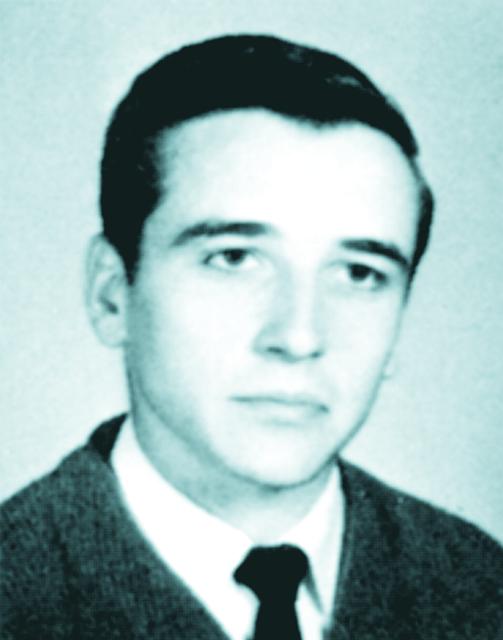
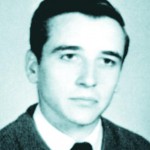
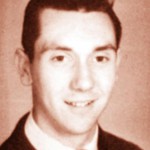


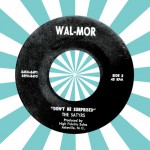
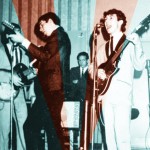

Yo, is there any way we could here the song posted on the net?
Sorry for the delay. Both Satyrs songs now posted above. Just click on the link to listen to “Blue Blue World.”
Great article! It made me happy to read it even though I didn’t even live in Asheville at the time. I am sure that every generation thinks their music is special, but it seems to me that 60s music truly was.